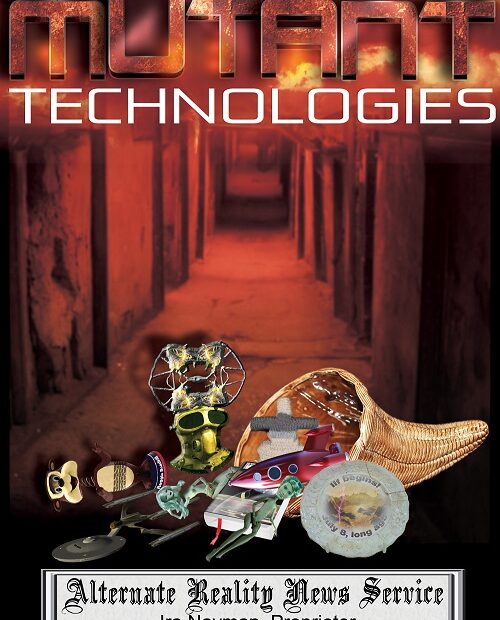by LAURIE NEIDERGAARDEN, Alternate Reality News Service Medical Writer
On a cotton candy plane with caramel corn mountains in the distance, unicorns with the face of Rush Limbaugh use their horns to pop pinatas in the shape of Franklin Delano Roosevelt. “I always knew heaven would be exactly like this!” enthused Margaret Mendelssohn Meiville to herself.
Meiville was one of 237 patients in comas who are part of a unique study lead by Erica Erato of Anthonys Hopkins Medical School. Using Mutant Technologies’ Psychrect 2000, which was originally intended to help writers avoid typos by tapping into their psyches to find the word they meant to enter, Erato found she could communicate with people with “locked in syndrome” who were otherwise unable to communicate with the world.
“You know how you’ll be sitting on the bus and, not having anything better to do, you’ll start daydreaming that the person sitting opposite is really a butterfly wearing a cocoon in the shape of a human being?” Erato explained. “As you watch, everybody around you bursts into a riot of colourful butterflies who escape out an open window and congregate in a stadium downtown to watch lacrosse and drink nectar out of supersized cups and argue about whether dark matter exists or is just a dream of physicists who cannot face the reality of the heat death of the universe and then pogo sticks rain down from the sky and pretty soon all of the butterflies are – are…
“Well – uhh, yeah – my research found that people in comas live in those kind of daydreams.”
“Let me just say,” Mutant Technologies CEO Theodoric Monangahela did so, “that this is not a sanctioned use of our technology. If we had had any idea that the Psychrect 2000 could be used for this purpose, we…we would have changed its name and marketed it differently!”
The first recorded use of the psychic autocorrect programme to read the thoughts of coma patients was by Sam Gafflebab of the small town of No Fixed Address, Florida. “Mama Rosalita had been in a coma for over 15 years after a flying Eggo incident,” Gafflebab explained. “I thought, if I just rested her fingers on the keyboard, we might see something. But, uhh, nothing happened. The kids, Moondark and Veridian, were getting kind of restless, and began tossing waffles around the hospital room. Before anybody could do anything to stop them, one of them hit Mama Rosalita’s finger with enough force to cause it to depress a key – the letter “f,” I believe it was. Then, the screen just filled up with descriptions of…scenes of a…of a carnal nature. Who knew? I mean, she’s 83 years old, for god’s sake!”
Gafflebab and his wife Samantha hustled their children out of the hospital room, but they had seen enough to make credible Farcebook updates on the subject. Within months, people all across the world were buying Psychrect 2000s in order to communicate with their comatose loved ones.
“We did not give Mister Gafflebab permission to do that,” Monangahela insisted. “If we had known he was going to use the Psychrect 2000 to communicate with his brain-damaged mother, we would have had a documentary crew in the room to record it for future PR purposes! Umm…for humanitarian causes, of course.”
Monangahela added that he used the term “brain-damaged” in its clinical sense, and that he hoped that people sensitive to the language would not be quick to – damn Twitter, anyway!
While the creators of the technology may not have been enthusiastic about its new use, others were ecstatic.
“We knew it! We knew it all along!” exulted the Reverend Pat “Oral” Righteous. “Just because people have no apparent brain function doesn’t mean that they aren’t alive and shouldn’t be kept alive by any means necessary! Take that, orthodox medical establishment!”
Erato found that if somebody typed a question into the computer on which the Psychrect 2000 software was running, the people in comas would respond to it. When she asked what they would prefer if given the choice between rejoining the real world or dying, 97 per cent of those who didn’t cling to the fantasy that they were in the real world chose death.
“Oh! Well! I mean…” Reverend Righteous backpedalled, “clearly, more research is needed before we can say anything definitive on the subject. I’m sure that good Christian folk weren’t part of the…you know, the group that wanted to die…”
Actually, all but one of the Christians identified in Erato’s research preferred to die. Those who expressed a preference to continue living were primarily atheists who had created worlds of Marxian or Randian perfection.
“Oh, poop,” Reverend Righteous solemnly commented when apprised of this.
Meanwhile, Erato was enthusiastic about continuing her research. “If we can get these results with people in a coma,” she stated, “imagine what we could find out about the inner lives of Senators!”


